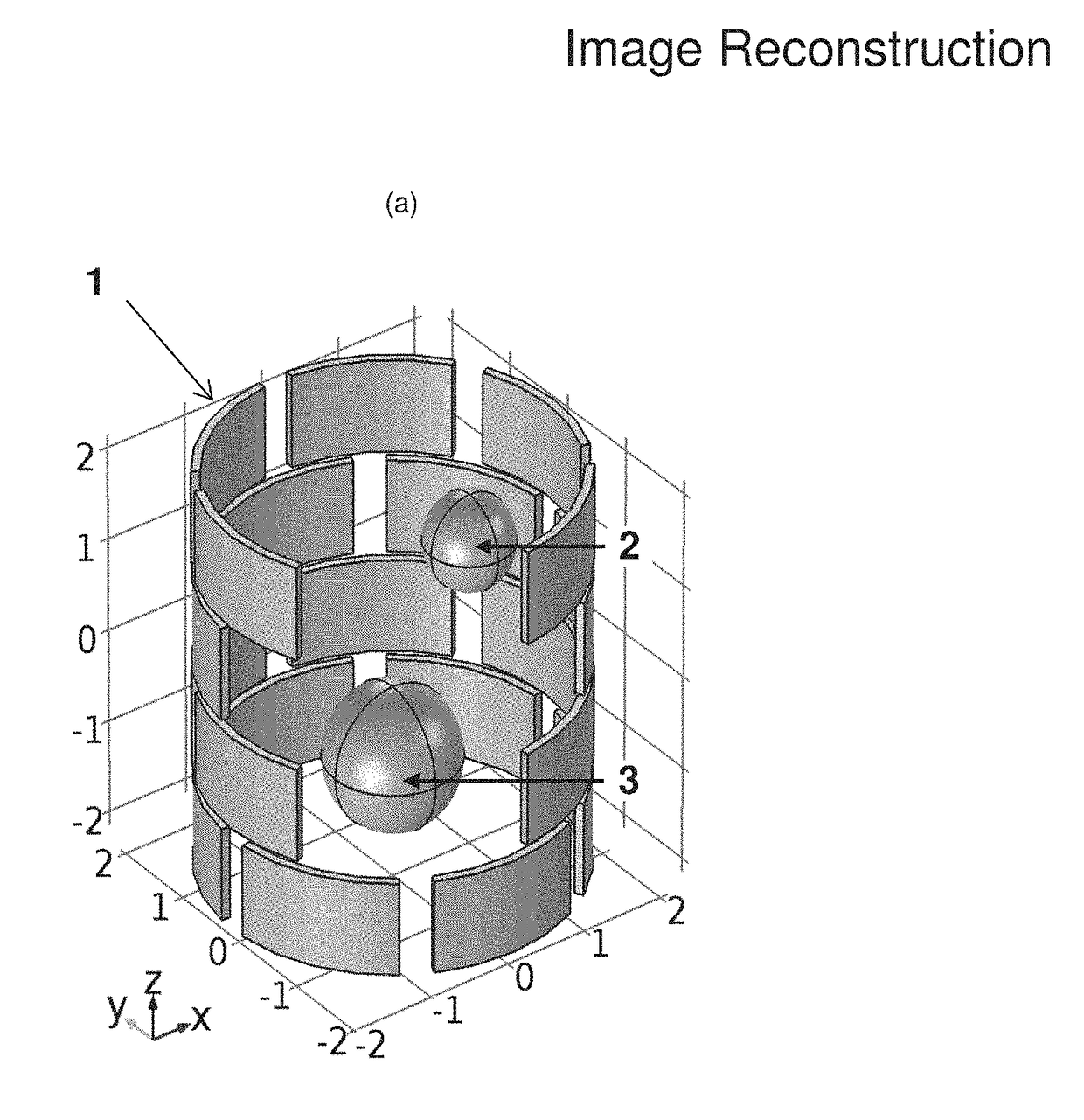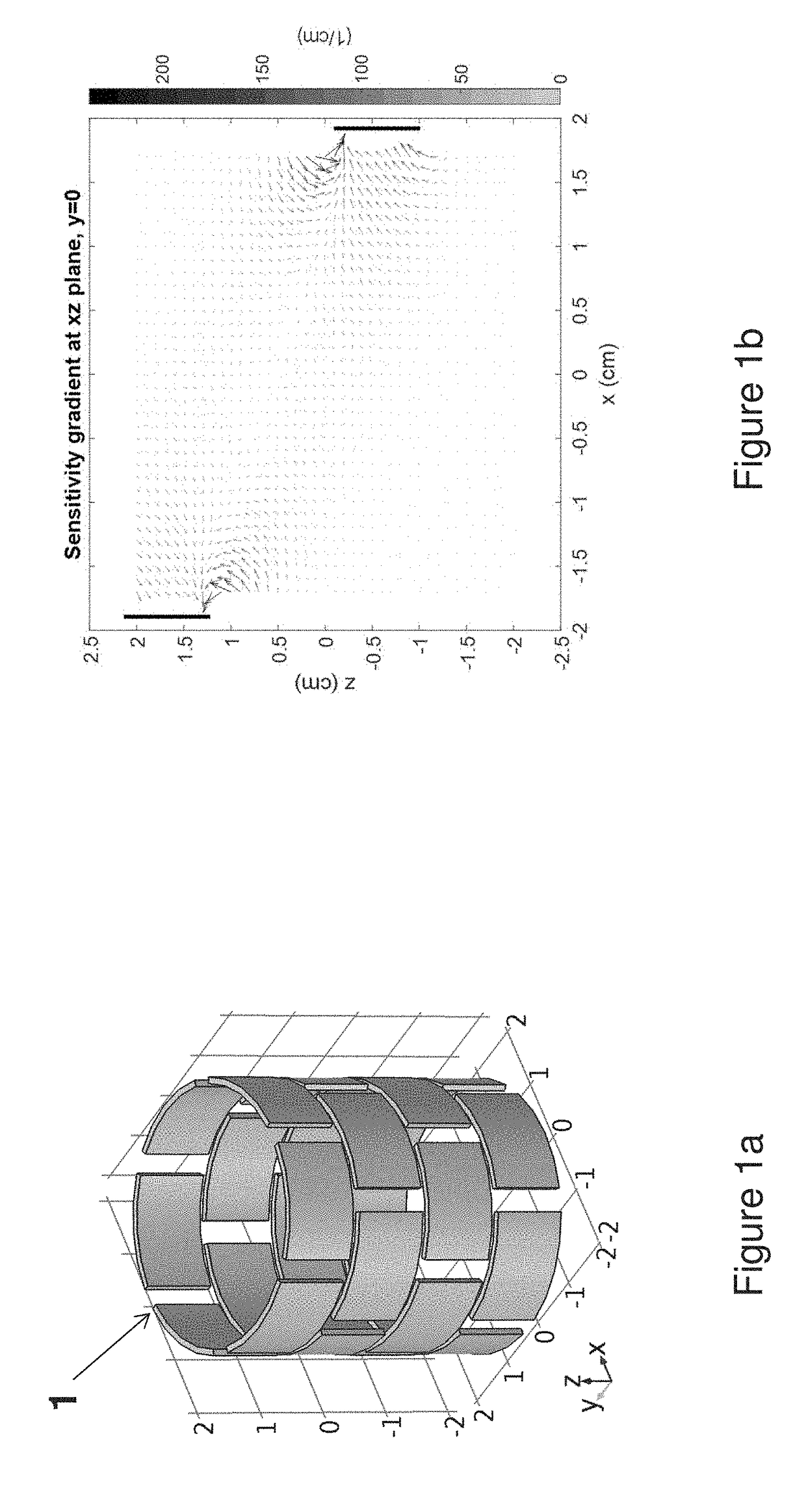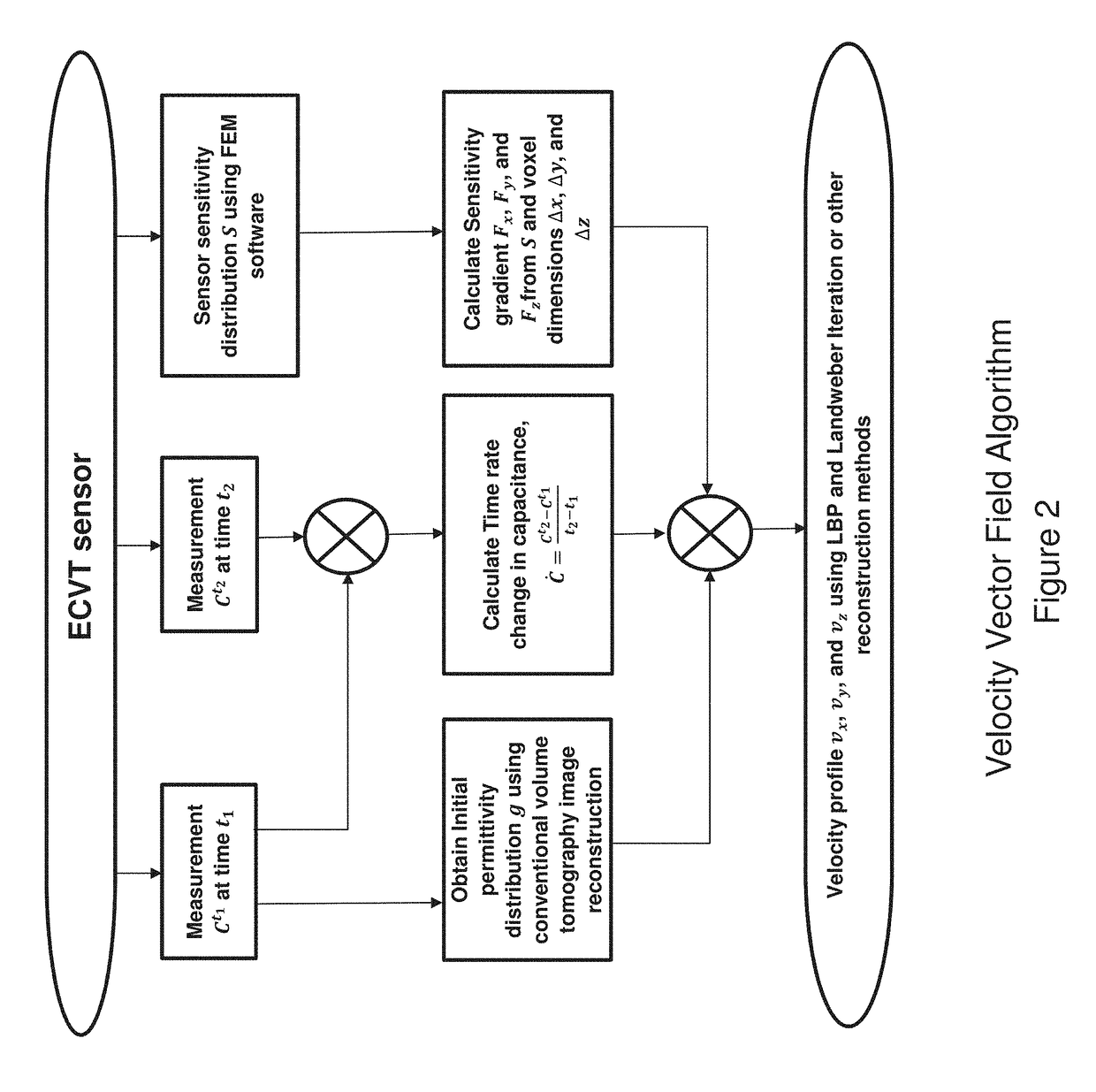Velocity Vector Field Mapping Using Electrical Capacitance Sensors
a capacitance sensor and velocity vector technology, applied in the direction of instruments, fluid speed measurement, liquid/fluent solid measurement, etc., can solve the problems of instruments suffering from different shortcomings, simulations that do not completely capture the physical world, and extremely complex fluid mechanics studies
- Summary
- Abstract
- Description
- Claims
- Application Information
AI Technical Summary
Benefits of technology
Problems solved by technology
Method used
Image
Examples
Embodiment Construction
)
[0016]FIG. 1a illustrates a typical 24 electrode ECVT sensor (1) with 4 planes of plates. FIG. 1b illustrates a sensitivity gradient at the xz plane between an opposite pair of electrodes at two different planes. The sensitivity gradient map is obtained by applying a gradient operator to the sensitivity map of the ECVT sensor.
[0017]FIG. 2 illustrates a flow chart of on embodiment of the velocity algorithm for vector field mapping of velocity at each voxel location. A voxel is a 3D pixel. Pixels are usually used for 2D discretization of a surface, and voxel is for 3D of a volume. Capacitance frames are acquired at different times and used to calculate the time derivative of capacitance from the known frame rate of the data acquisition. Frame is one set of capacitance measurements that are used to reconstruct one image. Frame rate is the number of capacitance sets that are produced by the acquisition system per second. This is also the maximum number of images that can be reconstruct...
PUM
 Login to View More
Login to View More Abstract
Description
Claims
Application Information
 Login to View More
Login to View More - R&D
- Intellectual Property
- Life Sciences
- Materials
- Tech Scout
- Unparalleled Data Quality
- Higher Quality Content
- 60% Fewer Hallucinations
Browse by: Latest US Patents, China's latest patents, Technical Efficacy Thesaurus, Application Domain, Technology Topic, Popular Technical Reports.
© 2025 PatSnap. All rights reserved.Legal|Privacy policy|Modern Slavery Act Transparency Statement|Sitemap|About US| Contact US: help@patsnap.com



